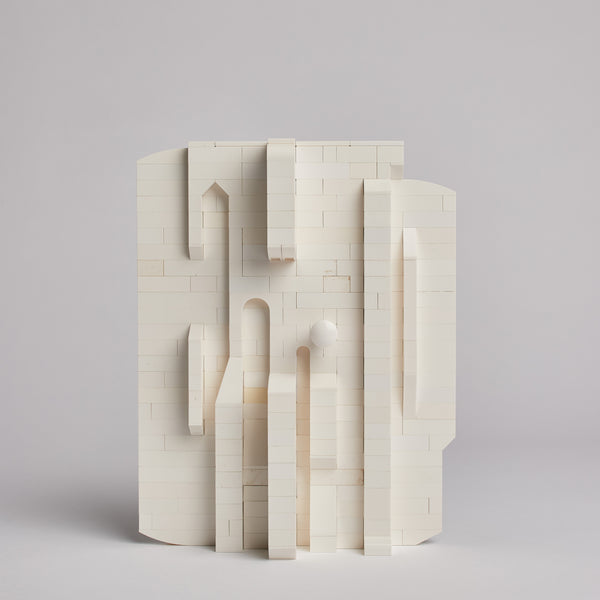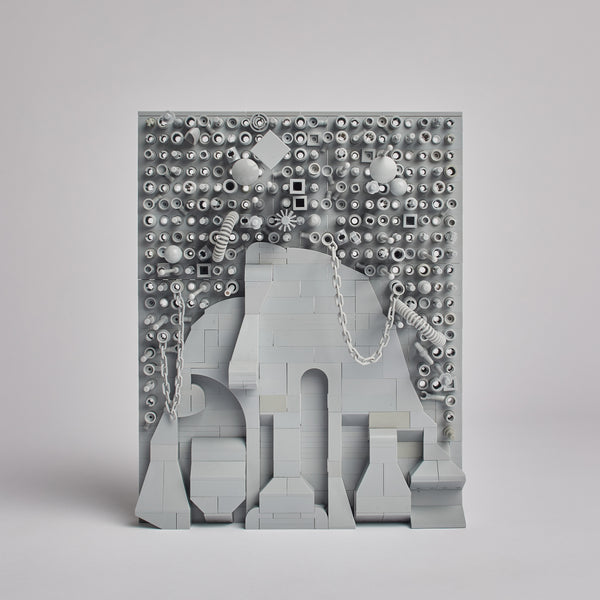
Jan van Schaik, Lost Tablets Insomata
"Lost Tablets is a series of works which express a tension between a universally recognisable children’s toy and the grammar of architectural symbols.
Years ago while walking around the base of the Parthenon in Athens, I noticed, clearly discernible in its base, remnants of the great monument’s former iterations, scarred by the battles that violently transformed them from architecture to rubble.
So too, the blocks of these found Lego pieces bear the marks and discolouring left on them by their former owners before putting them up for sale on the second hand market.
Discolouration, writing, dirt, glue and even teeth marks are evident on the found blocks, and expressed in the new object.
Each of the works in the series has the same overall dimension, a dynamic face, and a sheer face.
The architecture of the sheer face is bound by the tension between the new profile of the tablet, and the varying surface qualities of the found blocks, each with the markings of its own history.
The architecture of the dynamic face is bound together by the tension between the expectation of what a Lego composition would usually prescribe, and the language of an imagined collective architectural unconscious.
The strange resonant familiarity of the tablets oscillates between the platonic, almost primal, recognisability of Lego, and the architectural grammar of the city caves of Matera, the churches of Borromini, the arches of the Doge’s palace in Venice, the buttresses of Gothic cathedrals, and the blue ceilings of the Shah Mosque of Isfahan.
The Lost Tablets’ titles are borrowed from the names of ships found crew-less and adrift at sea."
Jan van Schaik is an artist and architect based in Melbourne. He is the director of MvS Architects, a researcher and senior lecturer at RMIT Architecture & Urban Design, the founder of +Concepts, designer of Lost Tablets, and a creative sector consultant at Future Tense.
Arising from an interest in the complex relationship between human beings and their environments, Jan’s work explores the cultural and societal elements of architecture, and then expresses intuitive spatial discoveries in the coded geometric and spatial languages of the built environment.





